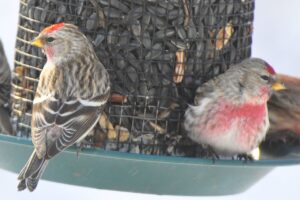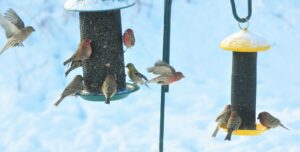Photography courtesy of Lowell Washburn, all rights reserved.
On February 23, 1994, United States Congressman, John Porter [R-Il] officially proclaimed February as National Bird Feeding Month.
Reading his proposal into the Congressional Record, Porter noted that February is the most difficult month for wild birds. Expounding the educational, entertainment, and ecological values of wild birdlife, the Congressman encouraged an increased public participation in providing food, water, and shelter for America’s backyard birds.

Porter’s resolution was adopted. Twenty-eight years later, National Bird Feeding Month is observed and utilized by local, state, county, and national conservation organizations to promote awareness for the needs of birds as well as other forms of American wildlife.
Whether you’re young or old, rich or poor, backyard bird feeding represents the perfect cold weather pastime – a way to actively to enjoy the wonders of the wintery outdoors while remaining in the warm comfort of your indoor environment. According to surveys conducted by the U.S. Fish & Wildlife Service and the Cornell Laboratory of Ornithology, more than 57 million American households are engaged in actively feeding backyard birds. Americans annually spend more than $4 billion on specialized bird foods; and another $800 million on equipment including feeders, bird baths, and bird houses.

Backyard bird feeding can be as complex, or as simple, as a person cares to make it. It should also be noted, however, that wild birds seem to whole heartedly agree with the familiar phrase stating that — ‘Variety is the spice of life’. The more types of food there are to choose from, the more species and greatest total number of birds you’re likely attract.


 Susan Judkins Josten
Susan Judkins Josten Rudi Roeslein
Rudi Roeslein Elyssa McFarland
Elyssa McFarland Mark Langgin
Mark Langgin Adam Janke
Adam Janke Joe Henry
Joe Henry Sue Wilkinson
Sue Wilkinson Tom Cope
Tom Cope Kristin Ashenbrenner
Kristin Ashenbrenner Joe Wilkinson
Joe Wilkinson Dr. Tammy Mildenstein
Dr. Tammy Mildenstein Sean McMahon
Sean McMahon